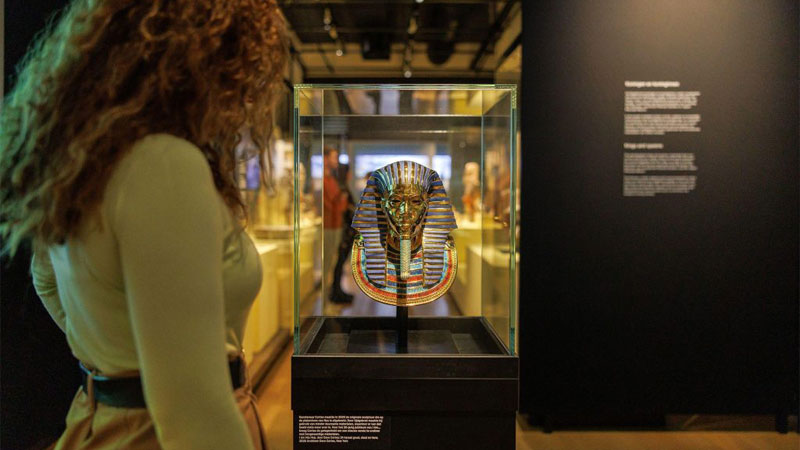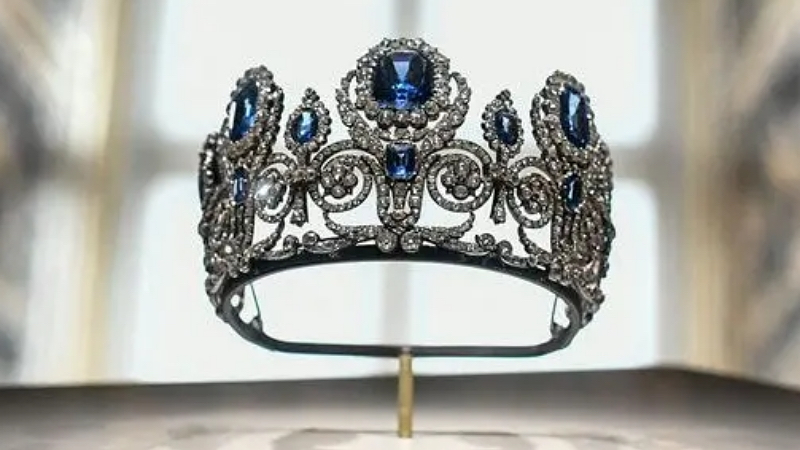|
A museum in the Netherlands has come under fire for cultural appropriation, after using the likeness of American rapper Nas’ in a Tutankhamun-inspired bust

Lauren Heath-Jones | Planet Attractions | 02 Jun 2023

 The bust, inspired by Nas’s I Am album artwork, was designed by artist Dave Cortes Credit: National Museum of Antiquities The bust, inspired by Nas’s I Am album artwork, was designed by artist Dave Cortes Credit: National Museum of Antiquities
A museum in the Netherlands has come under fire for cultural appropriation, after using the likeness of American rapper Nas’ in a Tutankhamun-inspired bust.
The statue, created by artist Dave Cortes, forms part of an exhibition at the National Museum of Antiquities (NMA) in Leiden that explores music by Black artists that has been inspired by or references ancient Egypt and Nubia.
It depicts Nas as an Egyptian Pharoah reminiscent of King Tutankhamun’s mask and the artist’s I Am album cover.
Called Kemet: Egypt in Hip-Hop, Jazz, Soul and Funk, the exhibition features contemporary artworks, music videos, album covers and photographs, alongside some of the museum’s collection of ancient Egyptian artifacts.
However, Egyptian antiquities expert Abd al-Rahim Rihan has criticised the exhibition, saying that the DNMA had insulted “Egyptian civilisation by portraying Tutankhamun as Black,” and accused the museum of “cloning an Egyptian antiquity,” the Egypt Independent newspaper reports.
The artwork has also been lambasted on social media, with users calling the DNMA out for cultural appropriation and presenting an ‘ahistorical’ version of ancient Egypt.
Museum director Wim Weijland, however, has defended the piece, telling ArtNet: “The exhibition contains a modern sculpture that represents the musician Nas, modeled after the mask of Tutankhamun. The exhibition explains that it is a contemporary artwork, not a replica. The exhibition explains why and when it was made and clarifies that it is not an ancient Egyptian artefact.”
Dr Daniel Soliman, curator of the Egyptian and Nubian collection at DNMA, meanwhile, said that while it explores sensitive subject matter, the exhibition also platforms voices that are often neglected by museums.
“This is a very difficult topic and that is the thing with this exhibition: I think you really have to give it a chance,” he told The Art Newspaper
“There are several voices in the exhibition, and maybe some of that nuance is difficult to communicate through a single Facebook post.
“There are Egyptians, or Egyptians in the diaspora, who believe that the pharaonic heritage is exclusively their own. The topic of the imagination of ancient Egypt in music, predominantly from the African diaspora, Black artists in different styles; jazz, soul, funk, hip-hop, had long been ignored.”
Museums and galleries
|
|






Supplier Showcase 2025: The biggest attractions projects landing worldwide this year
|